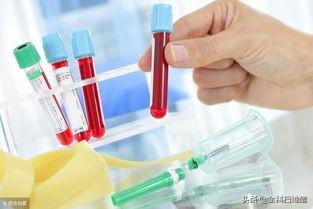I have been a diabetic for 9 years and my fasting blood sugar one is in the high 7's to low 8's, is that considered high blood sugar?
It is recommended that you monitor your blood glucose at the same time and on a regular basis, taking a relatively accurate average over a period of time, and testing regularly at the hospital to ensure accurate blood glucose values.
diagnostic criteria
1. Age ≥45 years; those with body mass index (BMI) ≥24; those with previous IGT or IFG; or those with glycated hemoglobin Alc between 5.7 and 6.5%
2. People with a family history of diabetes
Normal blood glucose values
Normal blood glucose values
3. Those with low high-density lipoprotein cholesterol (HDL) (<0.9 mmol/L) and/or triglycerides (>2.8 mmol/L)
4. Those with hypertension (adult blood pressure ≥ 140/90mmHg) and/or cardiovascular lesions
5. Pregnant women ≥30 years of age with a history of gestational diabetes mellitus; a history of delivering a large infant (≥4 kg); unexplained staghorn births; women with polycystic ovary syndrome
6. Year-round physical inactivity
7. Use of e.g. glucocorticoids, diuretics, etc.
regular value
Normal values for fasting blood glucose
1. The general fasting whole blood glucose is 3.9-6.1 mmol/L (70-110 mg/dL) and plasma glucose is 3.9-6.9 mmol/L (70-125 mg/dL).
2. Diabetes mellitus was diagnosed by fasting whole blood glucose ≥6.7 mmol/L (120 mg/dL) and plasma glucose ≥7.8 mmol/L (140 mg/dL), with 2 repeated measurements.
3. A glucose tolerance test should be performed when fasting whole blood glucose is above 5.6 mmol/L (100 mg/dL) and plasma glucose is above 6.4 mmol/L (115 mg/dL).
4. When fasting whole blood glucose exceeds 11.1 mmol/L (200 mg/dL), it indicates minimal or lack of insulin secretion. Therefore, when fasting blood glucose increases significantly, no other tests are necessary to diagnose diabetes.
Postprandial blood glucose normal value
1 hour after meal: blood glucose 6.7-9.4 mmol/L. Maximum of 11.1 mmol/L (200 mg/dl)
2 hours postprandial: blood glucose ≤ 7.8 mmol/L.
3 hours postprandial: returned to normal after the third hour and was negative for all urine sugars
Normal values of blood glucose for pregnant women
1. Fasting of pregnant women not more than 5.1 mmol/L
2, pregnant women 1 hour after meals: 1 hour after meals blood glucose value is generally used to detect pregnant women in the detection of diabetes, authoritative data show that pregnant women 1 hour after meals shall not be more than 10.0mmol / L is the normal level of blood glucose.
3, 2 hours after meals for pregnant women: the normal blood glucose value after meals is generally stipulated to be no more than 11.1mmol/L, while the normal blood glucose value 2 hours after meals for pregnant women is stipulated to be no more than 8.5mmol/L.
Precautions
1. The blood glucose value of peripheral blood measured with a blood glucose meter may be 10% higher than that of venous blood glucose.
2, fasting blood glucose generally refers to overnight fasting for more than 8 hours, the next morning 6 to 8 hours to take blood glucose, normal people fasting blood glucose is 3.8-6.16 mmol / liter. Fasting blood glucose reflects the basic blood glucose level in the body when there is no glycemic load, and its measurement can be affected by the amount and composition of the previous day's dinner, fluctuating changes in mood, and good or bad sleep at night.
3, postprandial blood glucose normal value of 2 hours blood glucose refers to the blood glucose value measured 2 hours after the meal, which reflects the body's tolerance after quantitative sugar load. Normal 2-hour postprandial blood glucose should be less than 7.0 mmol/liter.
4. Clinically, peripheral blood glucose may be slightly lower than venous blood glucose, usually not more than 1mm0l/L. When venous blood glucose is greater than 11mm0l/L, peripheral blood glucose is 7.7-8.2% lower than venous blood glucose, and when venous blood glucose is less than 11mm0l/L, the two are closer.
According to the age of diabetes, the fasting blood glucose of 7-8 is neither high nor low. This blood glucose value should be the blood glucose value under diet control and no hypoglycemic drugs. If a diabetic with a history of diabetes of 9 years does a good job of controlling diet in daily life, a fasting blood glucose of 6.1 or <7 should be easy to achieve. What are the reasons for the less than optimal results in blood glucose control? There may be the following problems: 1) the amount of carbohydrates consumed at each meal may be larger; 2) the choice of food varieties does not reasonably take into account the requirements of GI and GL values for food selection, or has not formed a complete concept of the two; 3) the choice of the time of the evening meal (early or late) may be more arbitrary; 4) the choice of the start of the sleep time after the evening meal must be optimized and so on. ...FYI, thanks for the invite.
The reference value of fasting blood glucose for healthy people is 3.9-6.0 mmol/L. Fasting blood glucose greater than or equal to 6.1 mmol/L is called hyperglycemia. Fasting blood glucose is overnight fasting 8-10 hours above the early morning venous blood glucose. It reflects basal insulin more objectively. Fasting at 6.1-6.9 is called impaired fasting glucose. Fasting greater than or equal to 7 consider diabetes. It is recommended to do glucose tolerance test as soon as possible to evaluate the insulin function. Adjust glucose-lowering therapy according to your condition. Diabetes mellitus more than 10 years will have related complications, it is recommended to check urine protein, urine sugar, fundus examination.
[Professional doctor to answer your questions
If the fasting blood glucose of diabetic patients is 7-8mmoⅠ/L for a long time, it indicates that the blood glucose control is not good, suggesting that the blood glucose control measures taken for a long time have not achieved the desired therapeutic effect, and need to be adjusted in time. Such a blood sugar level for up to nine years, there should have been complications, please go to the hospital in time for examination, such as checking urine microalbumin to see if there is damage to the kidneys, checking the blood vessels in the fundus to see if retinopathy occurs, checking the carotid plaques to see if there is atherosclerosis, even if there is no physical sensation or discomfort, these lesions will exist.
More importantly, fasting blood glucose represents the baseline level of blood glucose throughout the day, on which postprandial blood glucose is more difficult to control, such as the detection of 2 hours postprandial blood glucose tends to be at a higher level, the damage to blood vessels will be greater, diabetic nephropathy, diabetic ophthalmopathy, diabetic cardiovascular disease occurs with a higher likelihood.
Therefore, diabetics should have a clear understanding of their blood glucose control goals, which are divided into two main types of goals:
The general control objective is also the basic control objective is:
Fasting blood glucose less than 7.0 mmol/L and 2-hour postprandial blood glucose less than 10.0 mmoI/L
The ideal control goal is also the better control goal is:
Fasting blood glucose less than 6.1 mmol/L and 2-hour postprandial blood glucose less than 7.8 mmoI/L
Young and middle-aged people should meet the desirable control targets, while elderly people over 65 years of age can be kept within the general target range, and elderly people over 80 years of age can be further relaxed appropriately.
[Hope this answer can help you, welcome to click on the attention and leave a message, together to learn more health knowledge].
With a 9-year history of diabetes, fasting blood glucose can be at the level of 7 or 8 mmol/L. It should be said that fasting blood glucose is still relatively stable, so does it mean that blood glucose control is better?
In the treatment of diabetes, for the blood sugar control requirements, we do not care to look at the fasting blood sugar, but also look at the postprandial blood sugar, and diabetic friends of the specific situation to determine whether it is better control.
The Importance of Smooth Blood Sugar
For diabetic friends, keeping blood sugar stable is a goal that always needs to be achieved. And stable blood sugar should not only look at the fasting blood sugar is stable, but also to test the postprandial blood sugar, preprandial, postprandial blood sugar difference in the 3mmol / L or less, it shows that the blood sugar control is relatively stable.
Stabilization of blood glucose reduces damage to the large blood vessels and microvessels and reduces the incidence of complications, and glucose variability is often used to indicate stable blood glucose control.
Glycemic variability is a non-stationary state in which blood glucose levels vary and oscillate between their fluctuating high and low values, persisting across intra- and inter-day periods.
Glycemic variability has been confirmed by a large number of studies to be significantly associated with the clinical prognosis of diabetic patients, and the time in target range (TIR) of blood glucose, as one of the key indicators for assessing short-term glycemic variability in the CGM report, has also attracted increasing clinical attention in recent years.
A series of studies suggests that glycemic variability is an important indicator of the state of glycemic control in diabetes and that there are important implications for glycemic management.
Increased blood glucose variability can lead to a variety of adverse metabolic processes such as oxidative stress, endothelial dysfunction, activation of the coagulation system and inflammatory responses, which are involved in the development and progression of diabetic complications.
Glycated hemoglobin (HbA1c) is widely used as the "gold standard" for assessing glycemic control, but it still has limitations such as failing to reflect dynamic changes in blood glucose. The development of ambulatory glucose monitoring (CGM) technology has brought new opportunities for comprehensive assessment of patients' glycemic control.
Requirements for glycemic control in different conditions
Diabetic friends with a relatively short course of disease, not combined with a variety of acute and chronic complications of diabetes mellitus fasting blood glucose is recommended to be below 7 mmol / L, postprandial blood glucose below 10 mmol / L, blood glucose control is ideal.
For the longer course of the disease, combined with cardiovascular and cerebrovascular disorders, shorter life expectancy, mental abnormalities, etc., fasting blood glucose control at 8 mmol / L, postprandial blood glucose 12 mmol / L blood glucose is also possible.
However, for patients with diabetes mellitus combined with pregnancy or gestational diabetes mellitus, the fasting blood glucose control requirement is 3.3-5.1mmol/L, postprandial blood glucose is 4.0-6.7mmol/L, so fasting blood glucose is 7, 8mmol/L such control level is still relatively poor, and need to be adjusted as soon as possible to ensure that the normal conduct of the pregnancy treatment program.
I'm Dr. Sun, pay attention to Dr. Sun talk about sugar, continue to learn more quality health knowledge, help please like, have questions please leave a message, will reply!
It's high blood sugar, before meals it's 4,1 ......6,1. You're measuring how much hemoglobin. It's definitely high. Take medication to control it and exercise.
I have already elaborated on this issue in my replies during the period from May 4th to April 21st. On November 17, another example from Zhengzhou, Henan Province was given for your reference.
Your blood glucose 7:00 to 8:00, or high, the normal blood glucose value is 3.9 to 6.11 according to the doctor said you even type 2 diabetes, in the future life should pay attention to the daily diet, don't eat fried food, don't eat sugary food, eat some fruits, eat less staple food, etc., and exercise properly, I wish you a speedy recovery.
Under normal circumstances, the normal range of our fasting blood glucose is 3.9-6.1mmol/L, and the normal range of our two-hour postprandial blood glucose is 4.4-7.8mmol/L, above which the blood glucose level is elevated. However, for people with existing diabetes, our blood glucose control target is <7.0mmol/L for fasting, <10.0mmol/L for two hours after meal, and glycated hemoglobin <6.5% is appropriate, and according to our own different situations, the blood glucose control target can be adjusted appropriately.

So, to the questioner's point about having a current history of diabetes, is a fasting blood glucose in the 7:00 to 8:00 range considered hyperglycemia? Comparatively speaking, such a blood glucose level is still a little bit on the high side, especially for the young and middle-aged population and those with a longer life expectancy, and it is recommended that the glycemic control target can be a little bit tighter. However, for the elderly population or those with shorter life expectancy, such a level of control is acceptable.
Diabetes mellitus is a very common chronic disease in our life, which is a syndrome manifested by persistent hyperglycemia and can be accompanied by the occurrence of multiple tissue and organ complications. For patients who have been diagnosed with diabetes mellitus, it is recommended that they should actively seek medical attention and standardized treatment under the guidance of a doctor. Individualized plans should be formulated after fully evaluating the condition in order to stably control the blood glucose level up to the standard, to reduce the occurrence of complications and to improve the quality of life.
Diabetic patients should pay attention to a reasonable diet, three meals should be regular, more fresh vegetables, coarse grains, less high glycemic index food; to appropriate exercise, it is recommended to start half an hour after eating, aerobic exercise is the main focus, talking about gradual and orderly progress; to rationalize the use of medication, if necessary, can be used in insulin substitution therapy; but also pay attention to monitoring the changes in blood glucose levels and regular review. We hope that everyone has a correct understanding that diabetes is not scary, and focuses on standardized treatment in order to control the condition stably.
This article is answered by General Practice Sweeper, we hope that it will be helpful to you, copyright ©️, reproduced with permission. Please correct any deficiencies. The article is for reference only and is not intended as medical advice or medical guidance.
If you look at your fasting blood sugar alone, it is acceptable for a diabetic of 9 years duration. There is a misconception in the eyes of our people that we only focus on fasting blood sugar.
The assessment of blood glucose in diabetics does not just look at fasting blood glucose. It must also be combined with postprandial blood sugar. It is not known if your glycosylated hemoglobin is up to standard.
We must be concerned about whether there is a combination of diabetic complications. In fact, simply a little high blood sugar will not have too much effect in the short term. But long-term high blood sugar is prone to diabetes-related complications. Including.
①Major vascular complications, such as cerebral infarction, myocardial infarction, and lower extremity vascular blockage.
② Microangiopathy, such as diabetic nephropathy, such as diabetic retinopathy. Many of us old people feel the eyes see things blurred, think it is the age, often may be the emergence of diabetic retinopathy, diabetic retinopathy caused by hemorrhage in the fundus of the eye and caused by the blurring of food.
③ Diabetic peripheral neuropathy, such as cold hands and feet, some feel numbness, some feel pins and needles itching pain.
④ Diabetic phytoneuropathy, the most obvious manifestation in life is erectile dysfunction in men.
⑤ Diabetic foot. Unexplained blisters on the feet, which break easily after injury and do not heal when broken.
So it's important to look at not only fasting blood sugar, but also postprandial blood sugar. Keep an eye on the complications of diabetes. Regular visits to the endocrinologist for evaluation are recommended to maximize your benefits.

This question and answer are from the site users, does not represent the position of the site, such as infringement, please contact the administrator to delete.